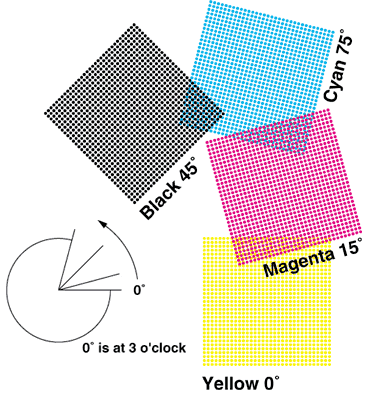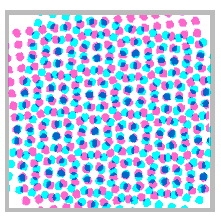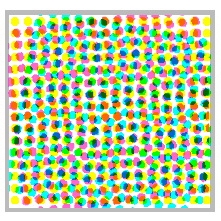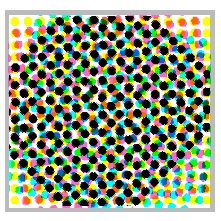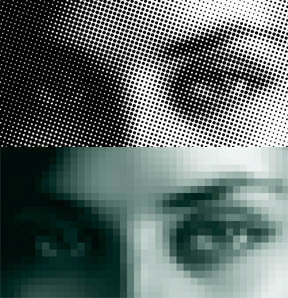
Color
Halftones
In offset printing, the density of CMYK inks can not be varied in continuous fashion across an image, so a range is produced by means of halftoning.
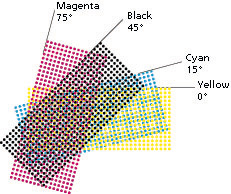
In halftoning, tiny translucent CMYK ink dots of variable sizes are printed in overlapping grids. As the dots get smaller, so does the shade of color that is reproduced.
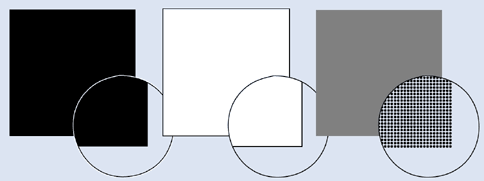
Grids are placed at different angles for each of the ink colors. Smaller halftone dots absorb less light; thus, as a result of an increase in the amount of reflected light, apparent density is decreased and the object appears lighter.
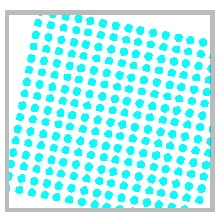
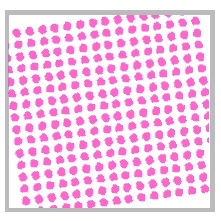
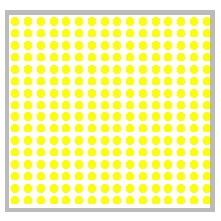
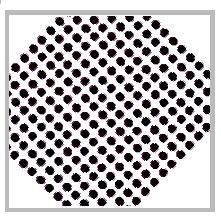
Halftone Angle or "Slope"
Part of setting up the halftone in page layout is determining its angle or "slope". If the halftone were to be displayed with a slope of 0° it would be hard on the eyes. For this reason halftone dots are placed at an angle to each other to blend in better. The dots on a simple grayscale halftone need only be angled at 45°. But the dots on a process color halftone need to be offset from each other in a pattern so they appear harmonious.
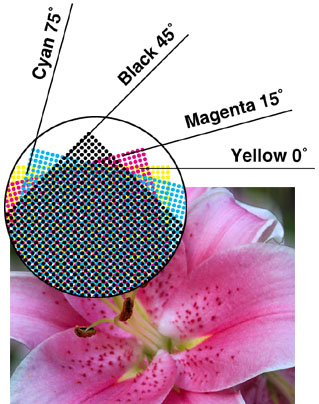
If you will notice in the representative image above, the cyan, magenta, yellow and black dots appear to form a circular group called a "rosette". The default angles vary with the separation printer selected for output. The default angles for cyan, magenta, yellow and black are:
